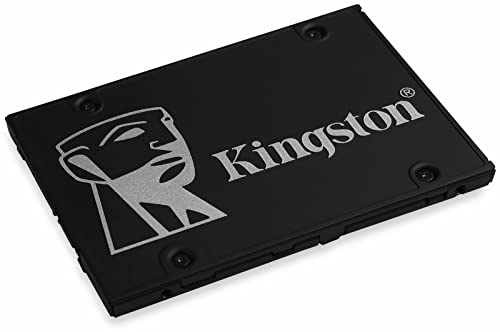Understanding Kingston SSDs: What They Are and How They Work
What is an SSD?
When we talk about SSDs, or Solid State Drives, we are referring to a type of data storage device that uses flash memory to store data. Unlike traditional hard drives that rely on spinning disks and read/write heads, SSDs have no moving parts. This means they respond significantly faster when accessing or writing data, making tasks like booting up your computer or launching applications much quicker.
How Kingston SSDs Function
Kingston is a well-known brand in the SSD market, and their drives are designed to provide high performance and reliability. They work by using NAND flash memory, which allows for rapid data transfer. When you save a file, it is stored as electrical charges in millions of memory cells, providing almost instant access to your data. This not only enhances speed but also means less wear and tear on the drive, contributing to its longevity.
Benefits of Upgrading to a Kingston SSD: Speed, Reliability, and Performance
Experience a Dramatic Speed Boost
By upgrading to a Kingston SSD, you will instantly notice a remarkable improvement in your computer’s speed. Tasks that used to take several minutes, such as booting the operating system or running large files, can now be completed in seconds. With read speeds often exceeding 500 MB/s, Kingston SSDs allow your applications to launch almost instantaneously, providing a smoother and more efficient computing experience.
Enhanced Reliability
Reliability is another significant benefit of Kingston SSDs. Traditional hard drives can be prone to mechanical failure due to their moving parts. In contrast, SSDs are more durable and less susceptible to physical shock, which means your data is safer. Kingston designs their SSDs to withstand everyday usage, making them a dependable choice for storing crucial files and applications.
Improved Performance for Gaming and Content Creation
For gamers and content creators, a Kingston SSD can significantly enhance performance. Load times in games are drastically reduced, allowing for seamless gameplay. When working with large video files or running demanding applications, the speed of an SSD means less waiting time and more productivity. You’ll find that transferring large files becomes effortless, freeing you to focus on your projects.
Choosing the Right Kingston SSD for Your Needs: A Simple Guide
Assessing Your Storage Requirements
Before diving into your options, it’s important to assess your storage needs. Consider the types of files you regularly work with—do you need more space for videos, games, or software? Kingston offers various capacities ranging from 120GB to several terabytes, so determining your needs is crucial. If you’re primarily using the SSD for your operating system and applications, a smaller drive may suffice; however, for extensive multimedia files or large game libraries, you might want a larger capacity.
Understanding Different SSD Types
Kingston manufactures different types of SSDs catering to various use cases. SATA SSDs offer a good balance between price and performance and are ideal for upgrading older computers. NVMe SSDs, on the other hand, provide even faster data transfer speeds, making them suitable for high-end gaming and professional use. Ensure you consider the type of connection your computer supports when selecting a drive.
Evaluating Performance Features
Kingston SSDs come equipped with performance features that can enhance your computing experience. Look for models with DRAM cache, as this allows for quicker data access compared to drives without it. Additionally, check for features like thermal throttling, which helps maintain performance levels during heavy usage by protecting the drive from overheating.
Setting Up Your Kingston SSD: Step-by-Step Instructions for Beginners
Preparing for Installation
Setting up your Kingston SSD does not have to be daunting. To begin, first back up all your important data to prevent any loss during the transition. Once you’re prepared, gather the necessary tools, typically a screwdriver, and ensure you have access to your computer’s internals.
Installing the SSD
Next, turn off your computer and unplug it from the power supply. For laptops, you may need to remove the back panel; for desktops, you’ll typically open the side casing. Locate the drive bay and secure the Kingston SSD using screws if necessary. Make sure all connections are snugly fitted, ensuring that both power and data cables, if applicable, are connected properly.
Transferring Data and Booting Up
After installation, you can boot up your computer. If you’re planning to install an operating system on the new SSD, you may need to create a bootable USB drive with your OS of choice. Follow the on-screen instructions to format the drive and transfer data from your previous drive if needed. Once the installation is complete, enjoy the new speed and reliability that comes with your Kingston SSD!
Maximising the Lifespan of Your Kingston SSD: Tips for Optimal Use
Keep Your SSD Firmware Updated
Regularly checking for firmware updates is crucial to keep your Kingston SSD performing at its best. Manufacturers release updates to improve performance and reliability, and installing these updates can extend the lifespan of your drive.
Manage Your Storage Wisely
To maximise the longevity of your SSD, aim to keep some free space available. Ideally, leave about 10-20% of the drive’s capacity free. This allows the SSD’s controller to function efficiently, enhancing performance and preventing unnecessary wear.
Utilising TRIM Technology
Make sure that TRIM is enabled on your operating system. This feature helps the SSD manage unused data blocks, which optimises performance and prolongs its lifespan. TRIM commands the drive to erase unnecessary files, ensuring that your SSD maintains peak performance over time.





















